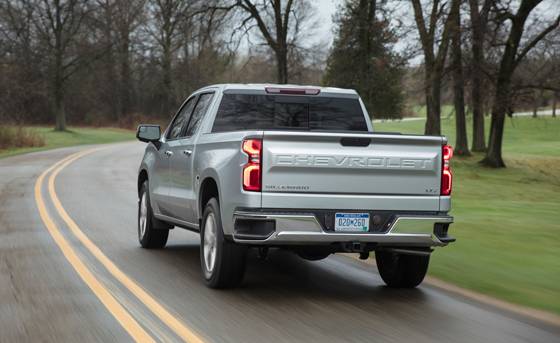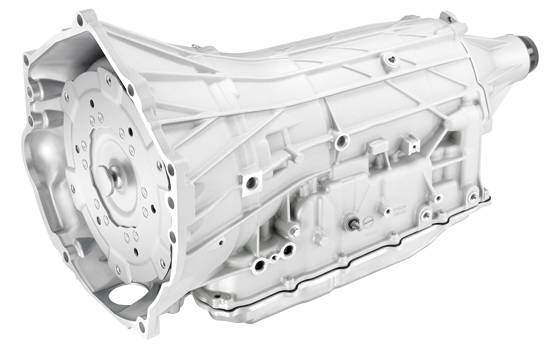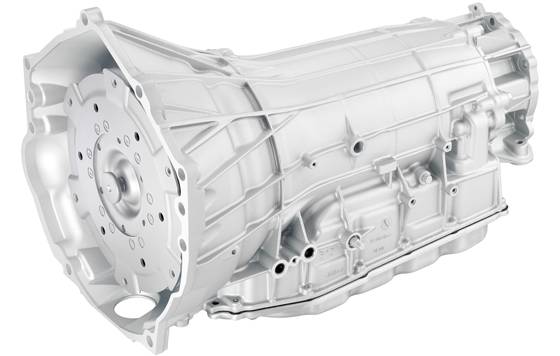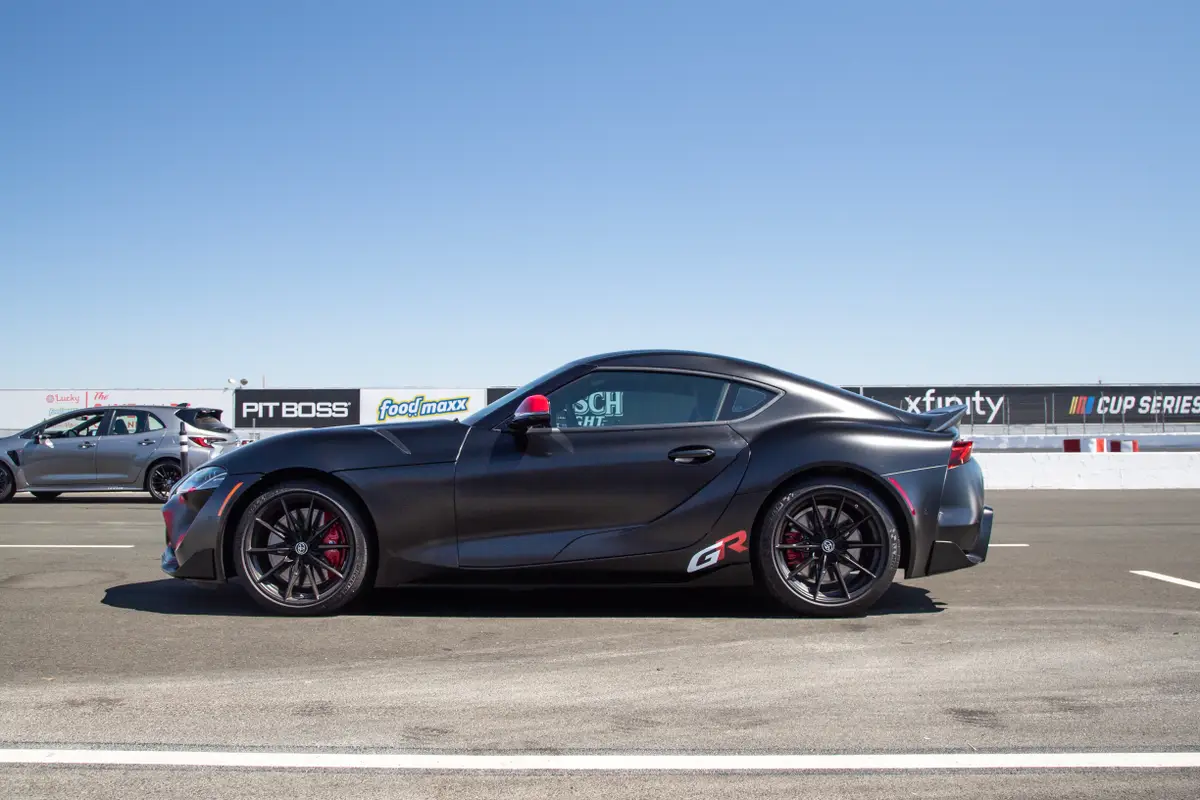Chevrolet's New Cylinder Deactivation System Is a Game-Changer

During the reveal of the 2019 Chevrolet Silverado 1500 at the 2018 North American International Auto Show in Detroit, Chevy said the new truck would have six engine options. Those are the 6.2-liter V-8, the 4.3-liter V-6, the new 2.7-liter turbocharged four-cylinder, the 3.0-liter turbo-diesel and two versions of the 5.3-liter V-8.
Related: What’s the Best Half-Ton Truck for 2018?
The two 5.3-liter options depend on which technology is used for engine management and cylinder deactivation. Chevrolet broke down the differences for auto journalists at a technical briefing Thursday in Milford, Mich., then allowed us to drive a 2019 Chevrolet Silverado 1500 equipped with the reengineered 5.3-liter V-8.
New Cylinder Deactivation System
The base 5.3-liter V-8 uses an active fuel management system that deactivates cylinders to conserve fuel. It’s similar to the setup in the 2018 Silverado and can either run the truck on four or eight cylinders. The new setup, also on the 6.2-liter V-8, uses what Chevy is calling Dynamic Fuel Management. This technology can run on all eight cylinders or as few as one. But it’s way more advanced than that. The oil control valves on the new DFM setup are located in the engine block and there is one for each cylinder. There are also two switching lifters for each cylinder, totaling 16. Building the oil control valves into the block shortens the distance required for the oil to travel and speeds up response time.
The firing pattern for the new engine remains the same: 1-8-7-2-6-5-4-3. What is different is that the system can control which cylinder fires in the rotation. Chevrolet uses fractions to describe which mode the engine is in. For a basic example, 1/2 mode fires cylinders 8, 2, 5 and 3 during each cycle. That’s the same as V-4 mode in the older active fuel management setup. It gets more complicated when fewer cylinders are required. In a 1/3-firing fraction, the engine has to cycle three complete times for each cylinder to fire once. On the first cycle, 7 and 5 fire. On the second cycle, it’s 1, 2 and 4. On the third cycle, it’s 8, 6 and 3. Eventually every cylinder fires, but the system can control individually which cylinders fire on which rotation.
System Benefits
The benefits to the driver are multifold. Under the standard EPA test cycle with the old engine, the engine operated in four-cylinder mode 52 percent of the time. The other 48 percent of the time it was running as a full V-8.
Using the same test cycle, the upgraded engine operated in V-8 mode only 39 percent of the time. It then operated between four- and eight-cylinder modes 45 percent of the time. Finally, 16 percent of the time the engine operated on less than four cylinders. Using this new setup, the 5.3-liter Chevy can use up to 29 different cylinder firing patterns. In the production version of the Silverado, it uses only 17.

So why did some get cut? If you’ve driven the 2018 Silverado 1500 with cylinder deactivation, you can probably tell when it’s running on four cylinders. It’s a bit harsher and there’s an audible difference in how the engine sounds. Of the 29 different firing patterns, 12 resulted in similar effects. Engineers had a primary goal of making this all imperceptible to the driver.
To assist with smoothing out the roughness, Chevy is also uses a centrifugal pendulum absorber in the torque converter like it uses in the new 2.7-liter four-cylinder and the Chevrolet Colorado diesel.
Aside from reducing unpleasantness in the cabin, why else did Chevrolet switch to this system? Improving overall performance in all driving situations. By controlling cylinders individually, the engine can improve response and efficiency more often. In fact, the system makes changes every 12.5 milliseconds. That’s 80 decisions a second.
Jordan Lee, Chevrolet chief engineer of small-block engines, noted that there are nearly 66,000 lines of computer code devoted specifically to the new cylinder-deactivation function in the new engine control unit. The system takes into account more than 29,000 different variables to know which profile to run and when to run it.
Inside the truck, the V-4 and V-8 indicators are gone. Because the system is changing firing profiles on demand, there isn’t a display to replace it. If you want to really geek out over this technology when you drive the truck, you’ll be a bit disappointed.
How It Drives
To demonstrate how it works, Chevrolet attached a secondary display to the truck and then sent us out on the test track at GM’s Milford Proving Grounds to try it out.

The 5.3-liter feels natural mated to the eight-speed automatic, and shifts are as smooth in this truck as they are in the 2.7-liter turbo we also sampled. Additionally, it’s apparent after driving just 100 feet that this new truck is significantly lighter than the current generation.
What’s as impressive as the weight reduction is how seamlessly the DFM system works. If it weren’t for a digital readout showing the fraction mode the computer was in (1/3, 5/9, etc.), you’d have no idea that the system was working.
The system responds rapidly to changes in throttle input. You might be running on two or three cylinders and put your foot down. It immediately is in V-8 mode with no noticeable lag. If you didn’t know any better, you’d just think your V-8 was always running in V-8 mode.
GM has been building small-block engines since 1955 but continues to find ways to optimize and enhance them with the latest technology. Dynamic Fuel Management is the latest of those advancements.
We should get towing and payload performance numbers soon, along with EPA fuel-economy estimates. Although our time driving was brief, we walked away impressed with the 5.3-liter V-8 and are look forward to seeing how it holds up when subjected to the rigors of real-world testing in a few months when it hits dealerships.


Cars.com’s Editorial department is your source for automotive news and reviews. In line with Cars.com’s long-standing ethics policy, editors and reviewers don’t accept gifts or free trips from automakers. The Editorial department is independent of Cars.com’s advertising, sales and sponsored content departments.
Featured stories




